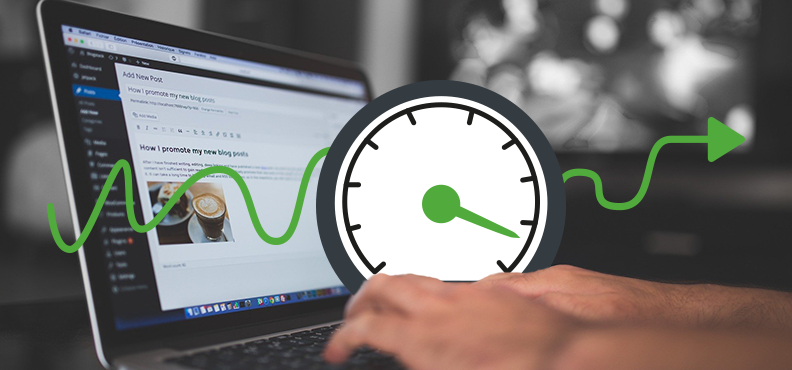Don’t you find a long wait when surfing the Internet annoying? What feels like an eternity when you just want to quickly read up on information can sometimes get on our nerves. Because visitors to a non-performing website usually have to concentrate 50% more to reach their goal. A delay of just a few seconds is enough to leave a negative impression on visitors. If you, as a website operator, do not keep an eye on the page speed – i.e. the loading speed of your website – you may risk business success.
PageSpeed – How important is loading time as a ranking factor?
Unofficially, page speed has long been a ranking criterion at Google, since the loading speed of websites has a direct effect on ranking factors such as the bounce rate, length of stay or click-through rate (CTR). Since the end of 2009, Google has been analyzing the loading times of websites and showing them to every webmaster in the Search Console. However, things got really serious in July 2018 at the latest, when Google released an update that actually made PageSpeed a fully-fledged ranking criterion in mobile searches. This was confirmed by Google itself in a tweet at the time. Since then, PageSpeed has become even more important. In times of increasing smartphone use, a fast loading time is in the interest of the user and at the same time means for the site operator that a mobile-optimized website is more important than ever.
In February 2017, Google made public how much the PageSpeed actually affects user behavior in a study that was updated again a year later: The bounce rate increases with a loading time of up to three seconds – i.e. the who immediately leaves the website again – by 32%, so you lose almost a third more visitors. With increasing loading time, the bounce rate increases even further: With a loading time of up to 6 seconds, the bounce rate is increased by 106%, i.e. more than twice as high.
In short, slow loading time has a major impact on visitor behavior and may prevent many visitors from making a purchase or contacting you. If a website does not react quickly enough, the willingness to jump is very high and the back button in the browser is pressed quickly.
Last but not least, the Google Bot should also be considered, which has a certain time limit per domain. If your website loads faster, the Google bot can crawl more efficiently, which benefits indexing.
Of course, a website’s page load time isn’t the only ranking factor. The lowest possible bounce rate and positive user experience also depend on other criteria. Other factors such as user-friendliness and product presentation also play an important role. Nevertheless, page speed will become more and more important, especially in view of the fact that Google will completely switch the crawling of websites to mobile-first indexing from September 2020.
What is the perfect loading time?
Various statements and opinions are circulating on the Internet about the question of the perfect loading time. Not infrequently, this also depends on the type of content on a website and how fast the competitor’s pages load. A website that consists purely of text content often has a faster loading time than one with many graphic elements and images. However, most experts recommend a load time of no more than one second. However, it can be assumed that so far only a few Lahore websites have reached this recommended value. Studies have found that Lahore is still far behind in international comparison, especially when it comes to mobile page speed. The average loading time of all compared websites in Lahore is 2.6 seconds.
How can I measure my performance?
There are numerous methods and tools to determine the PageSpeed of a website. Theoretically, you could also read the server log files and stop them manually. For long-term optimization and determination of valid data, we recommend PageSpeed Insights from Google. Here you can not only check the loading speed without further ado, but also receive many optimization suggestions and see resources that have already been optimized. Up to 100 points can be achieved in the evaluation. You can quickly see how your own website is doing and how far the loading time has already been optimized from Google’s point of view.
7 Expert Tips for PageSpeed Optimization:
A good ranking, many website visitors and more conversions – you can only achieve all of this with a fast-loading website. Below you can find out what is important for PageSpeed optimization and what measures you can take.
1- Reduce data volume and optimize images
One of the core elements of PageSpeed optimization is reducing the data volume. This means that the data to be transmitted should be kept as small as possible. In the case of image elements, this means, for example, only offering the graphics in exactly the size in which they are required: Why save a high-resolution image with a width of 4,000 pixels if it is only displayed on the website with a width of 300 pixels anyway? Subsequent scaling in the browser is theoretically possible, but not only has a negative effect on the page speed, but often also on the image quality. File format and compression should also be considered.
2- Optimize HTML source code and outsource JavaScript and CSS
The actual HTML code can also be optimized in many places. Although blank lines or comments in the source code make it easier to read, they inflate the data volume and should therefore be removed to improve loading speed. JavaScript and CSS specifications can be swapped out in external files instead of integrating them “inline” again and again. However, care should be taken to use one large JavaScript file instead of many smaller ones. If new HTTP requests always have to be carried out in order to load additional external files, this also has a negative impact on the loading time. The same applies to CSS files and of course to images. Our tip:If possible, integrate CSS before JavaScript! In this way, the page can already be set up and displayed correctly while the JavaScript is still being loaded.
3- Use browser caching
Another way to optimize PageSpeed is to use browser caching: Certain elements that rarely or never change (such as the header image) can be output with the HTTP status code “304 – Not Modified”: This causes the Browser is advised not to load this data from the server the next time you visit, but to pull it from its own cache.
4- Use Gzip compression
For data that still needs to be retrieved from your web server, it’s worth enabling gzip to reduce the amount of data transferred. The gzip compression can usually be activated very easily by modifying the .htaccess file.
5- Reduce redirects
Redirects should also be reduced as much as possible. In this context, it also makes sense to forward a subpage that has been deleted or renamed to a new relevant target URL instead of displaying a 404 error page. In contrast, however, it doesn’t make sense to switch many redirects in a row: According to Sistrix, each individual redirect increases the loading time by 0.2 seconds, and the Google bot stops crawling if it hasn’t reached its destination after five redirects. Therefore, if possible, it should be forwarded directly to the destination without detours.
6- Prioritize loading of specific content
It can also be a little trick to prioritize the loading of the immediately visible elements and thus ensure a perceived better loading time. Individual graphics that only appear three screen pages down can load a little later, since the visitor has to scroll there first anyway.
7- Use a dedicated server
Last but not least, the choice of hoster can also affect PageSpeed. So-called “shared hosting” is often used, which means that your website is located with the hoster along with hundreds of other sites on the same physical machine. This can also affect the loading time. A “dedicated server” on which only your website is located can help. A dedicated server is often a lot more expensive, but in addition to the improved speed, it also offers other advantages such as higher security and individual administration.
PageSpeed optimization from DML
It can be assumed that the loading speed will have an even higher priority in Google’s ranking algorithm in the future – especially with regard to mobile sites, which often load even more slowly. You should act now at the latest and improve the performance of your website, especially if your loading times are not yet top values compared to competing websites.
If you are interested in professional PageSpeed optimization, contact us or simply get in touch with your project manager at Online Marketing Solutions AG. Our experts will be happy to help you with the implementation. We look forward to hearing from you!









Temp Mail This is really interesting, You’re a very skilled blogger. I’ve joined your feed and look forward to seeking more of your magnificent post. Also, I’ve shared your site in my social networks!
helloI really like your writing so a lot share we keep up a correspondence extra approximately your post on AOL I need an expert in this house to unravel my problem May be that is you Taking a look ahead to see you
Somebody essentially lend a hand to make significantly articles Id state That is the very first time I frequented your website page and up to now I surprised with the research you made to make this actual submit amazing Wonderful task
you are truly a just right webmaster The site loading speed is incredible It kind of feels that youre doing any distinctive trick In addition The contents are masterwork you have done a great activity in this matter
I loved as much as youll receive carried out right here The sketch is attractive your authored material stylish nonetheless you command get bought an nervousness over that you wish be delivering the following unwell unquestionably come more formerly again as exactly the same nearly a lot often inside case you shield this hike
I appreciate you sharing this blog post. Thanks Again. Cool.
There is definately a lot to find out about this subject. I like all the points you made
This is really interesting, You’re a very skilled blogger. I’ve joined your feed and look forward to seeking more of your magnificent post. Also, I’ve shared your site in my social networks!